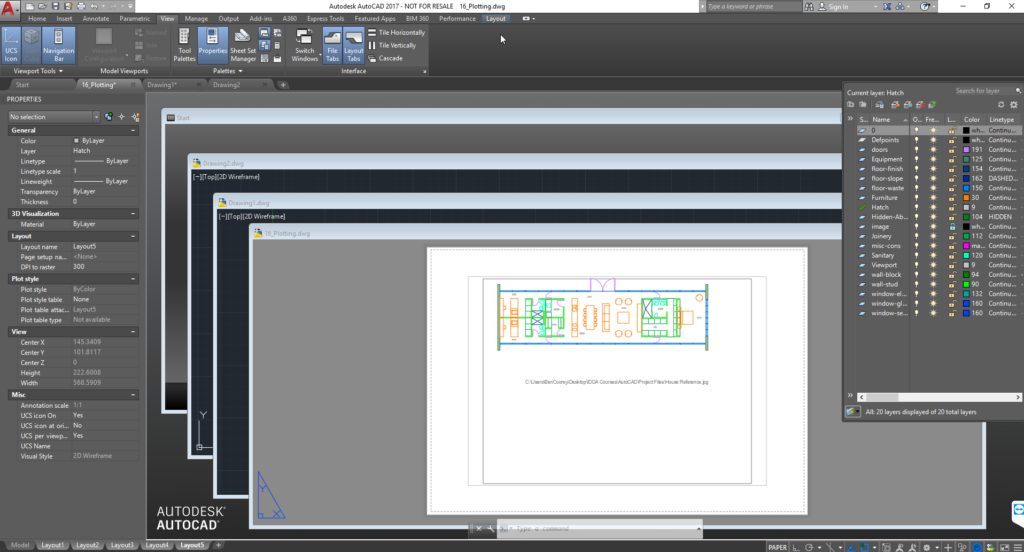Mastering Efficiency: Unraveling the Intricacies of the CloseAll Command in AutoCAD

Introduction:
In the intricate tapestry of computer-aided design (CAD), AutoCAD stands as a pillar of innovation and efficiency. Among its arsenal of commands, the “CloseAll” command emerges as a seemingly simple yet powerful tool, streamlining workflows and enhancing the user experience. This comprehensive article delves into the depths of the CloseAll command in AutoCAD, exploring its functionalities, applications, and the impact it has on the intricate dance of drafting, designing, and modeling.
Understanding the CloseAll Command:
The CloseAll command in AutoCAD is a command-line function that brings a unique set of capabilities to the forefront. Its primary function is to close all open drawings within the AutoCAD workspace, providing users with a swift and efficient means of managing their active drawing sessions. While seemingly straightforward, the CloseAll command plays a pivotal role in optimizing the drafting process, especially in scenarios where multiple drawings are simultaneously open.
Key Features and Functionalities:
- Batch Drawing Closure: The CloseAll command distinguishes itself by allowing users to close multiple drawings at once. This proves invaluable in situations where users are working on numerous projects simultaneously and need to quickly switch between drawings or close those that are no longer relevant.
- Improved Workspace Organization: AutoCAD users often find themselves juggling multiple drawings to facilitate efficient cross-referencing or data transfer. The CloseAll command offers a streamlined solution to tidy up the workspace, reducing clutter and enhancing focus on the specific task at hand.
- Enhanced Resource Management: With the CloseAll command, AutoCAD users can efficiently manage system resources by closing drawings that are no longer needed. This contributes to a smoother overall CAD experience, particularly in resource-intensive projects or when working with large drawing files.
- Increased Productivity: The efficiency gains introduced by the CloseAll command directly translate into increased productivity. By swiftly closing drawings en masse, users can transition seamlessly between different phases of a project, saving valuable time and ensuring a fluid design process.
Applications of the CloseAll Command:
- Project Navigation and Switching: In complex projects with numerous interconnected drawings, the CloseAll command simplifies the process of navigating between different project phases. Users can swiftly close drawings related to one phase and transition to another without the need for manual closure of individual files.
- Resource Cleanup in Resource-Intensive Projects: Resource-intensive projects often involve large drawing files that can strain system resources. The CloseAll command aids in resource cleanup by allowing users to close drawings not actively in use, thereby optimizing the CAD environment for smoother operation.
- Batch Processing and Scripting: The CloseAll command is a valuable tool in batch processing and scripting scenarios. Automation of drawing closure becomes feasible, enabling users to incorporate the command into custom scripts for repetitive tasks or as part of a larger automation workflow.
- Efficient Collaboration and File Transfer: When collaborating with team members, the CloseAll command facilitates efficient file transfer. Users can close drawings that need to be shared or worked on collaboratively, simplifying the process of sending, receiving, and managing project files.
Optimizing Workflow with the CloseAll Command:
- Customization for Workflow Needs: AutoCAD’s flexibility allows users to customize the CloseAll command to suit specific workflow needs. Users can explore command options and modifiers to tailor the behavior of the command according to their preferences and project requirements.
- Incorporating Keyboard Shortcuts: To further enhance efficiency, users can create custom keyboard shortcuts for the CloseAll command. This accelerates the drawing closure process, especially for users who prefer a more streamlined and keyboard-centric approach to AutoCAD navigation.
- Understanding Command Options: The CloseAll command offers various options that can be specified to control its behavior. Understanding these options, such as saving changes to drawings before closure or excluding certain drawings from the closure process, empowers users to wield the command with precision.
- Integrating with Batch Processing Workflows: For users engaged in batch processing workflows or automation, integrating the CloseAll command into scripts or custom programs can unlock advanced capabilities. This approach enables users to extend the functionality of the command to suit complex project requirements.
Conclusion:
In conclusion, the CloseAll command in AutoCAD stands as a testament to the software’s commitment to providing users with tools that transcend the traditional boundaries of drafting and design. Its simplicity belies its impact, as it empowers users to efficiently manage their drawing sessions, optimize system resources, and navigate seamlessly through the intricate landscapes of CAD projects. Mastering the CloseAll command is not merely a matter of convenience; it’s a strategic move toward elevating the efficiency and productivity of AutoCAD users worldwide. As AutoCAD continues to evolve, the CloseAll command remains a stalwart companion, offering a glimpse into the future of streamlined and intuitive CAD workflows. Embrace the power of CloseAll, and witness the transformation of your AutoCAD experience into a symphony of efficiency and precision.




